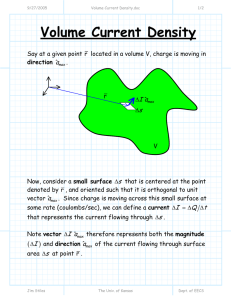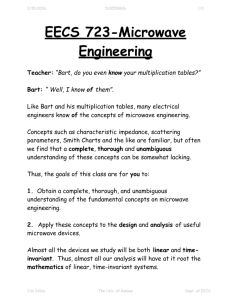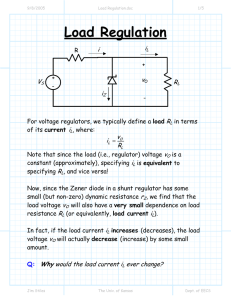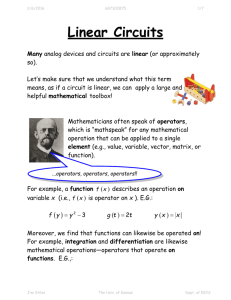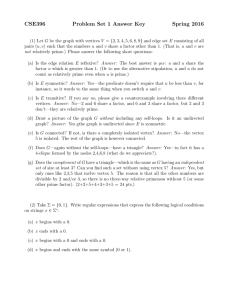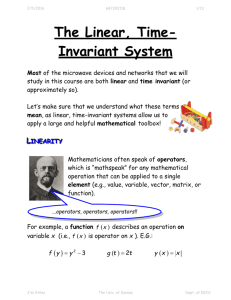Self Loop Rule
advertisement
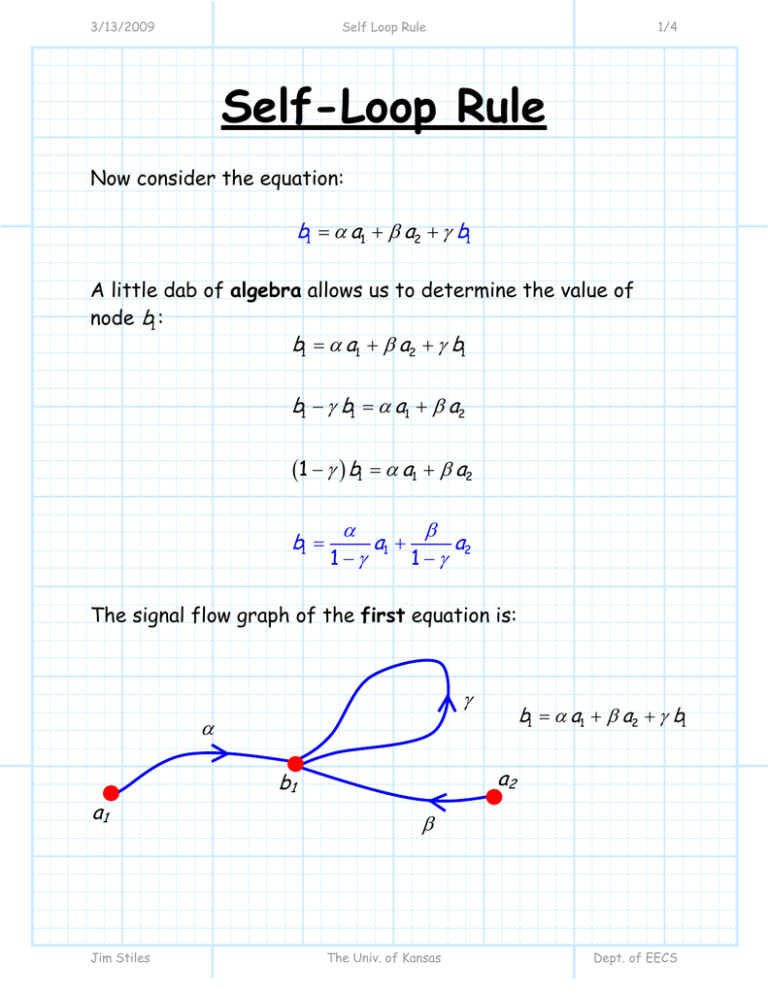
3/13/2009 Self Loop Rule 1/4 Self-Loop Rule Now consider the equation: b1 = α a1 + β a2 + γ b1 A little dab of algebra allows us to determine the value of node b1 : b1 = α a1 + β a2 + γ b1 b1 − γ b1 = α a1 + β a2 (1 − γ ) b1 = α a1 + β a2 b1 = α 1−γ a1 + β 1−γ a2 The signal flow graph of the first equation is: γ b1 = α a1 + β a2 + γ b1 α a1 Jim Stiles a2 b1 β The Univ. of Kansas Dept. of EECS 3/13/2009 Self Loop Rule 2/4 While the signal flow graph of the second is: b1 = α 1−γ a1 + β 1−γ a2 b1 α 1−γ 1−γ a1 β a2 These two signal flow graphs are equivalent! Note the self-loop has been “removed” in the second graph. Thus, we now have a method for removing self-loops. This method is rule 3. Rule 3 – Self-Loop Rule A self-loop can be eliminate by multiplying all of the branches “feeding” the self-loop node by 1 (1 − Ssl ) , where Ssl is the value of the self loop branch. For example: 0. 6 0.2 b1 = 0.6 a1 + j 0.4a2 + 0.2b1 b1 a1 a2 j 0.4 Jim Stiles The Univ. of Kansas Dept. of EECS 3/13/2009 Self Loop Rule 3/4 can be simplified by eliminating the self-loop. We multiply both of the two branches feeding the self-loop node by: 1 1 = = 1.25 1 − Ssl 1 − 0.2 Therefore: 0.6 (1.25 ) b1 a2 a1 j 0.4 (1.25 ) And thus: 0.75 b1 = 0.75 a1 + j 0.5 a2 b1 a2 a1 j 0.5 Or another example: a1 = 0.06 a1 − j b2 b1 = 0.3 a1 0.06 b1 a1 b2 Jim Stiles −j The Univ. of Kansas 0.3 Dept. of EECS 3/13/2009 Self Loop Rule 4/4 becomes after reduction using rule 3: −j a1 = b2 0.94 b1 = 0.3 a1 b1 a1 b2 −j 0.94 0. 3 Q: Wait a minute! I think you forgot something. Shouldn’t you also divide the 0.3 branch value by 1 − 0.06 = 0.94 ?? A: Nope! The 0.3 branch is exiting the self-loop node a1. Only incoming branches (e.g., the –j branch) to the selfloop node are modified by the self-loop rule! Jim Stiles The Univ. of Kansas Dept. of EECS
